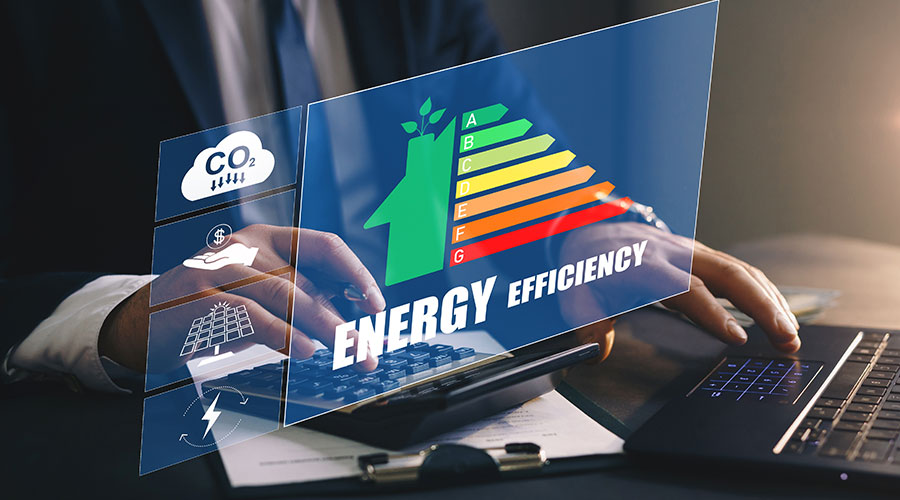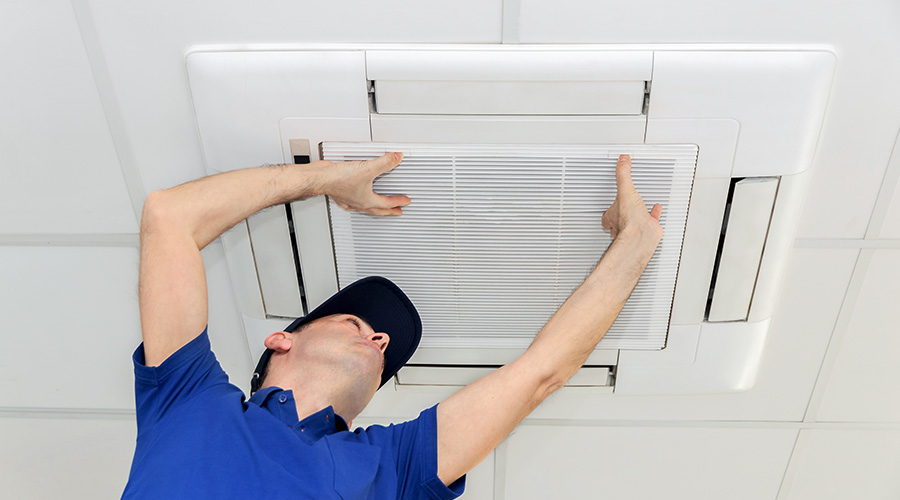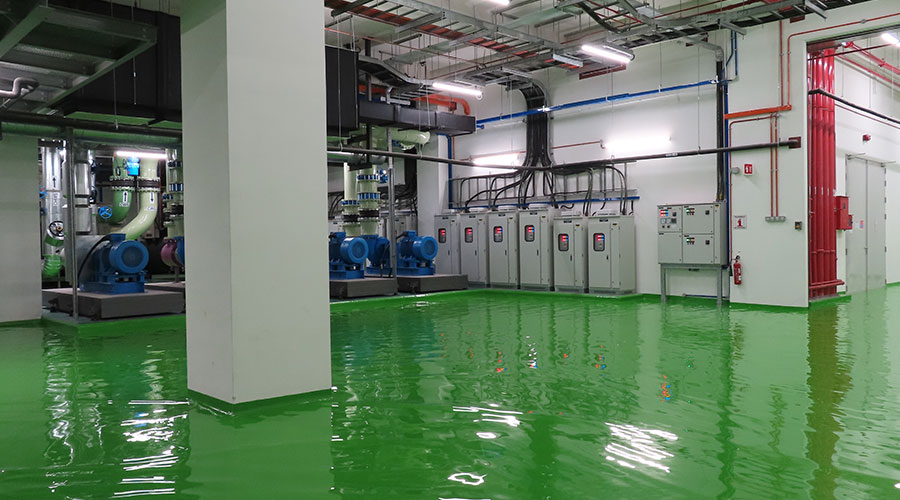Strategies for Protecting Indoor Air Quality in Emergencies
Particulate matter generated by emergencies such as wildfires has become an increasing concern because it can harm human health.
One major source of indoor air pollution is carbon dioxide (CO2) generated by people breathing. If levels rise too high, occupants can feel lethargic and develop headaches. CO2 is the most often regularly measured aspect of IAQ, though PM2.5 is gaining popularity. Other indoor air pollutants include odors, perfumes, carbon monoxide, VOCs, mold, moisture and dust. To combat indoor pollutants in facilities, HVAC systems bring in filtered outside air, which dilutes indoor air pollutant concentrations.
Measuring CO2 levels provides insight into IAQ. If CO2 levels are within established thresholds, managers can maintain outside air ventilation levels. But if the level of CO2 is too high, they might need to increase ventilation.
Reducing PM2.5 levels requires better air filtration, which is one reason managers might be under pressure to increase filtration levels to minimum efficiency reporting value (MERV) 13, a filter effectiveness rating developed by the American Society of Heating Refrigerating and Air Conditioning Engineers (ASHRAE). The higher an air filter’s MERV rating, the more effectively it removes smaller particulate matter, and generally, a higher level of filtration is better. A MERV 13 filter can remove 85 percent of PM2.5 particles.
But not all HVAC systems can handle increased levels of filtration, so managers need to assess their systems before an emergent condition develops. Managers can use portable air filters to supplement systems that cannot handle higher grade filters.
Having looked at the pollutants that natural and man-made events can put into the outdoor air, is it advisable to bring to in outside air during emergency and man-made events? Isn’t it healthier to isolate the facility and shut out the outside air?
The short answer is no. Facilities still need outside air ventilation to dilute indoor pollutants, and ventilation is essential in maintaining IAQ, which is critical for human health.
IAQ actions
One of the best actions a manager can take to protect IAQ during a natural disaster such as a wildfire is to ensure effective operations and maintenance ahead of time by focusing on these components:
HVAC systems. Make sure technicians perform preventive maintenance tasks as scheduled, including regular filter changes, checking for filter bypass — air sneaking past the filter due to an improper placement or fit — fixing broken dampers and linkages, sealing leaks, calibrating sensors and maintaining building pressurization.
Building envelope. Monitor for leaks, gaps and cracks. Seal gaps and cracks where infiltration might occur, such as at loading docks, door seals, operable windows and access doors.
Response plan. Depending on the emergency, such as a smoke event without local fire hazard, occupants might continue to occupy the building or might need to evacuate. Typical plan elements include:
- Outdoor air conditions. Monitor AQI.
- Building envelope. Keep windows and doors closed and sealed. Minimize the number of building entrances in use.
- Ventilation. Determine the minimum ventilation level needed for the facility’s systems during events for a pre-defined event mode. Make sure this maintains positive pressurization for the facility in relation to the outdoors, which helps reduce potential infiltration.
- Filters. Have a stock of pre-filters and main filters available for emergencies. Filters will likely need to be changed more frequently.
- Personal protective equipment. Have a supply of N95 masks available for those venturing outside.
During an emergency, managers need to enact the organization’s response plan:
- Monitor outdoor and indoor air quality. The outdoor air quality can vary throughout the day during events, depending on weather and wind direction.
- Building envelope. Keep windows closed, and minimize door use.
- Ventilation. Reduce ventilation to pre-determined minimum levels, upgrade filters to the best level systems can accommodate based on the plan, and monitor filters and prepare to change them more frequently.
- Use supplemental portable air filtration units where people gather.
Managers preparing readiness plans for their facilities can consult several good guidance documents, including:
- ASHRAE Guideline 44: Protecting Building Occupants from Smoke During Wildfire and Prescribed Burn Events
- ASHRAE Planning Framework for Protecting Commercial Building Occupants from Smoke During Wildfire Events
- UL 200C Guidance Document: Guidance and Practical Strategies for Reducing Public Health Impacts of Wildland-Urban Interface (WUI) Fires on Community Population.
Protecting a facility’s IAQ in the face of emergency and man-made events is a critical part of a manager’s charge. With forethought and an effective plan, managers can keep their staff and facilities prepared to safeguard occupants. It is the most important thing managers do.
Laurie Gilmer is president and chief operating officer of Facility Engineering Associates. She is a published author and instructor and past chair of IFMA’s global board of directors, and she serves on the National Visiting Committee of the Building Efficiency for a Sustainable Tomorrow Center.
Related Topics:













